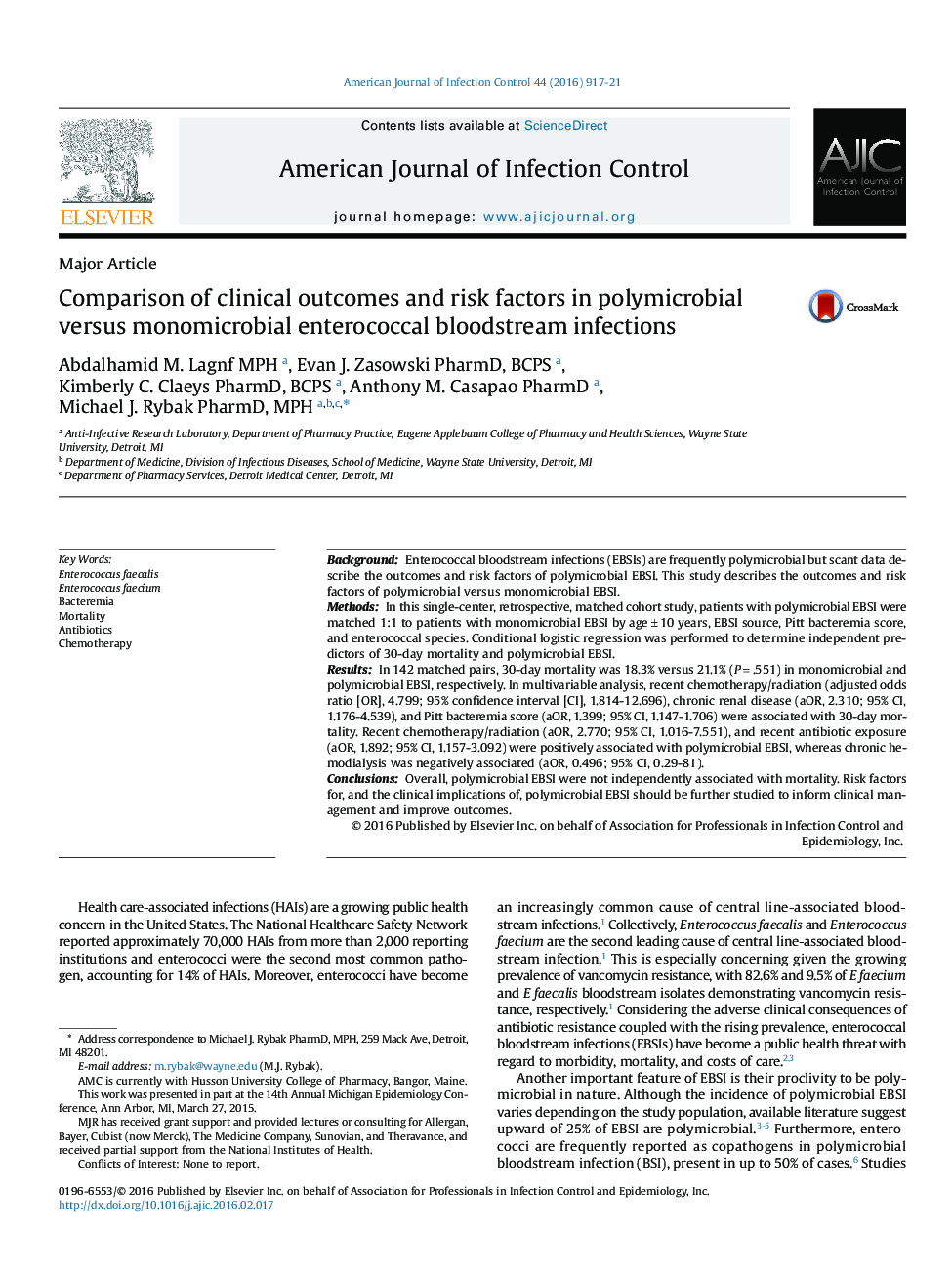| کد مقاله | کد نشریه | سال انتشار | مقاله انگلیسی | نسخه تمام متن |
|---|---|---|---|---|
| 5867205 | 1563455 | 2016 | 5 صفحه PDF | دانلود رایگان |
- Polymicrobial enterococcal bacteremia was not associated with increased mortality.
- Recent chemo/radiation was associated with polymicrobial enterococcal bacteremia.
- Recent antibiotic therapy was associated with polymicrobial enterococcal bacteremia.
- Chronic hemodialysis was associated with monomicrobial enterococcal bacteremia.
BackgroundEnterococcal bloodstream infections (EBSIs) are frequently polymicrobial but scant data describe the outcomes and risk factors of polymicrobial EBSI. This study describes the outcomes and risk factors of polymicrobial versus monomicrobial EBSI.MethodsIn this single-center, retrospective, matched cohort study, patients with polymicrobial EBSI were matched 1:1 to patients with monomicrobial EBSI by ageâ±â10 years, EBSI source, Pitt bacteremia score, and enterococcal species. Conditional logistic regression was performed to determine independent predictors of 30-day mortality and polymicrobial EBSI.ResultsIn 142 matched pairs, 30-day mortality was 18.3% versus 21.1% (Pâ=â.551) in monomicrobial and polymicrobial EBSI, respectively. In multivariable analysis, recent chemotherapy/radiation (adjusted odds ratio [OR], 4.799; 95% confidence interval [CI], 1.814-12.696), chronic renal disease (aOR, 2.310; 95% CI, 1.176-4.539), and Pitt bacteremia score (aOR, 1.399; 95% CI, 1.147-1.706) were associated with 30-day mortality. Recent chemotherapy/radiation (aOR, 2.770; 95% CI, 1.016-7.551), and recent antibiotic exposure (aOR, 1.892; 95% CI, 1.157-3.092) were positively associated with polymicrobial EBSI, whereas chronic hemodialysis was negatively associated (aOR, 0.496; 95% CI, 0.29-81).ConclusionsOverall, polymicrobial EBSI were not independently associated with mortality. Risk factors for, and the clinical implications of, polymicrobial EBSI should be further studied to inform clinical management and improve outcomes.
Journal: American Journal of Infection Control - Volume 44, Issue 8, 1 August 2016, Pages 917-921
